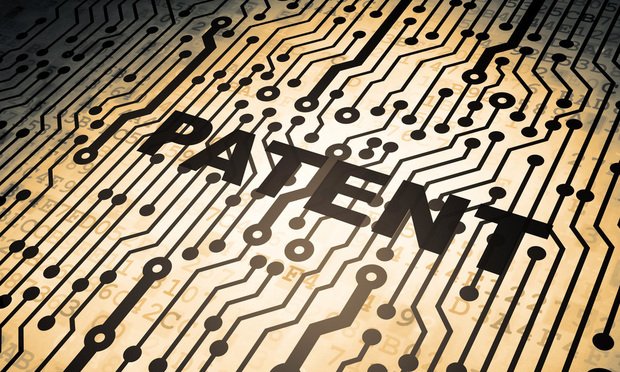Features

All the News That's Fit to Pinch
The emerging cases by authors and copyright owners challenging various generative AI programs for using copyrighted materials are certain to create new troubles for the courts being asked to apply the fair use doctrine to this important new technology.
Features

Recent Patent Trial and Appeal Board Approaches to Patent Claims on Medical Technology Implementing AI
Each decision involves reversal of a prior art rejection and contrasts with the other decisions on subject matter eligibility, revealing different PTAB approaches and results that can inform prosecution and appeal strategies.
Features

Treatment of Antibody Claims In the U.S. After 'Amgen v. Sanofi'
The future of antibody claiming in the United States is uncertain following the U.S. Supreme Court's May 2023 ruling in Amgen Inc. v. Sanofi, a highly anticipated decision concerning enablement and whether the traditional way to claim antibodies — claiming antibodies by their function — will survive as a valid claiming strategy.
Features

Can Artificial Intelligence Patents Overcome §112 Requirements?, Part 2
Part Two of a Two-Part article While the last decade has seen a dramatic increase in the number of AI patents, such patents face difficulty in overcoming the patent-eligibility challenges under §101 and Alice. Section 101, however, is not the only hurdles AI patents must overcome. Section 112, with its written description, enablement, and definiteness requirements, presents additional obstacles.
Features

How Patent Owners Can Leverage Climate Change Programs In Their IP Strategies
The USPTO has created or expanded several programs to promote the development of sustainable energy. For patent owners and inventors in the energy sector, these programs can provide a financial and administrative edge for the development and protection of their intellectual property, as well as play a beneficial role their overall IP strategy.
Columns & Departments

Real Property Law
Developer Has Obligation to Protect Neighboring Structures Even If They Do Not Abut Developer's Parcel Attorney's Fees May Be Available to Neighbor Who Negotiates License for the Purpose of New Construction Abuse of Power of Attorney Renders Deeds Invalid
Features

How AI Has Affected PR
When we consider how the use of AI affects legal PR and communications, we have to look at it as an industrywide global phenomenon. A recent online conference provided an overview of the latest AI trends in public relations, and specifically, the impact of AI on communications. Here are some of the key points and takeaways from several of the speakers, who provided current best practices, tips, concerns and case studies.
Columns & Departments

IP News
In Patrick v. Poree, the United States Court of Appeals for the Eleventh Circuit affirmed the denial of default judgment and summary judgment of copyright infringement claims based on a lack of evidence that the plaintiff owned a valid copyright.
Columns & Departments

Landlord & Tenant Law
No Wrongful Eviction Even Though Judgment of Eviction Was Reversed on Appeal No Vested Right In MCI Increases Executive Order 202.8 Does Not Apply to Tenant Who Voluntarily Vacated
Features

Strategic Planning for 2024: New Considerations for Legal Industry Leaders
The business landscape over the last few years has been changing at an ever-increasing speed, and 2024 promises to be no different. To effectively navigate the challenges and opportunities that present themselves, leaders need to adopt a fresh approach to strategic planning.
Need Help?
- Prefer an IP authenticated environment? Request a transition or call 800-756-8993.
- Need other assistance? email Customer Service or call 1-877-256-2472.
MOST POPULAR STORIES
- The Article 8 Opt InThe Article 8 opt-in election adds an additional layer of complexity to the already labyrinthine rules governing perfection of security interests under the UCC. A lender that is unaware of the nuances created by the opt in (may find its security interest vulnerable to being primed by another party that has taken steps to perfect in a superior manner under the circumstances.Read More ›
- Strategy vs. Tactics: Two Sides of a Difficult CoinWith each successive large-scale cyber attack, it is slowly becoming clear that ransomware attacks are targeting the critical infrastructure of the most powerful country on the planet. Understanding the strategy, and tactics of our opponents, as well as the strategy and the tactics we implement as a response are vital to victory.Read More ›
- Clause & EffectNet-Profit Rights/Movies Based on TV Shows<br>Insurance/Contract-Breach Exclusion<br>Insurance/Copyright-Infringement CoverageRead More ›
- Rights and Obligations In Patent LicensesThe owner of a commercially successful patent may have competing desires. On one hand, the patent owner wants to protect the patent and secure its maximum benefit; on the other hand, the patent owner wants to avoid enforcement litigation with competitors because it is expensive and puts the patent at risk.Read More ›
- Foreseeability as a Bar to Proof of Patent InfringementThe doctrine of equivalents is a rule of equity adopted more than 150 years ago by the U.S. Supreme Court. Prosecution history estoppel is a rule of equity that controls access to the doctrine. In May 2002, the Court was called upon to revisit the doctrine and the estoppel rule in <i>Festo Corp. v. Shoketsu Kinzoku Kogyo Kabushiki Co. Ltd.</i> Ultimately the Court reaffirmed the doctrine and expanded the estoppel rule, but not without inciting heated debate over the Court's rationale — especially since it included a new and controversial foreseeability test in its analysis for estoppel.Read More ›
